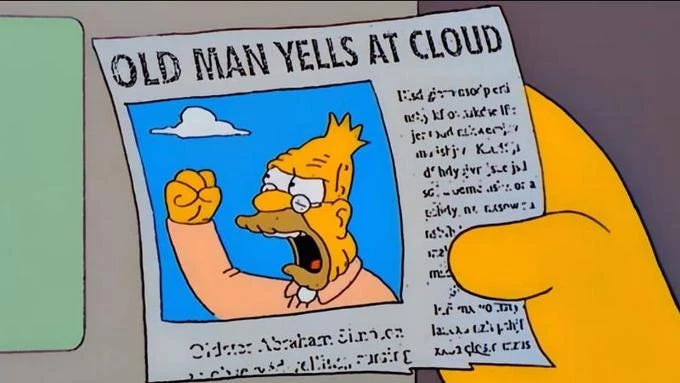Handsome and New Branch Campus Closes, Free Food at College Stadium, & More
Around the College Towns: Links and commentary related to urbanism and higher ed for the week of March 29 - April 4
Note: There is a lot going on this week (again). I am using this link round-up to focus on stories that fell through the cracks in terms of higher ed and urbanism. Let me know if you have any tips, authors, or stories related to the content.
Troy U Closing Branch Campus
I don’t always mourn domestic branch campus closures as much as I do full colleges closing. Oftentimes, these places are just some offices and small auxiliary classrooms in some ugly glass office park. No life, no aesthetics, just utilitarian expansion of education.
This does not seem to be the case with Troy University and its Phenix City campus, which is set to close this year after 50 years in operation.

The building is constructed with a nice brick and column aesthetic. I was thinking it must have been a repurposed municipal building built before World War II—often the case with these kinds of places. But I was wrong!
From Google Maps, it appears that it was only constructed in the last decade, sometime between 2012 and 2018:
2007 - It looks like there were some kind of old public housing units in this space (which looked pretty run down, unfortunately).
2012 - The space was then just an empty lot.
2018 - The university building was completed by then.
Granted, the space is still surrounded by a giant parking lot (bummer). But at least Troy resisted the urge to just throw up an ugly glass box. It shows that we can still build more aesthetically pleasing campus structures if we choose to do so (a topic I will have a deeper dive article on in the future). And that makes it all the more of a shame that it is shutting down.
Universities Ban So Much Stuff These Days
Not to get all Old Man Yells At Clouds here, but it seems like universities are banning more stuff than ever before. This is one of the annoying things about higher education today. The sector is becoming more paternalistic; likely, this is connected to broader society trending in the same direction.
The University of Michigan is banning dorm door decorations. It’s not a huge deal, just one more slow degradation.
What are the policies for e-bikes and scooters at the Ivies? They vary. Kudos to Harvard for not banning them and allowing dorm charging. But many other institutions have taken an extreme approach to e-bikes.
If no e-bikes, how about cats? Most universities ban pets in their campus housing, but a few actually allow students to have cats. Here’s the list from Catster—a site dedicated to cats. Hey, we all have our niche!
These kinds of broad bans are fairly annoying. I favor a more indirect approach to allow young people to work out these issues amongst themselves rather than having the institution make decisions for them. Let’s give back some agency to our young people.
Other Stories and Links
In more campus urbanism news, Syracuse is investing $500 million to reshape downtown. This will probably be good. Last time I visited, I thought the city was a rather sad area. Hopefully, the university can help to revitalize it. But I’m sure there will be a lot of local opposition. It’s also possible the university will make bad design and aesthetic choices. Hope it works out!
There is a new exposé on the city of Irvine, California, which is the next town over from me, dubbing it The Billionaire’s Town. It is an interesting case study for a planned community—a lot to like, even more to hate. It’s also very famous in China! I will have a future article on this place.
Speaking of little towns, a tiny Nebraska town is offering $50K to people willing to move there. The program has apparently been a success, garnering a flood of applications. Let’s keep monitoring these endeavors.
Around Substack
Note: I also think it’s important to shout out some fellow Substackers who I am reading here this week. Here are a few:
Friend and colleague Chris R. Glass runs the wonderful Distributed Progress, another fellow education-focused Substack. He has some alarming insight about drops in international student numbers in the US.
States like Michigan (-15.48%), Illinois (-15.03%), Ohio (-12.80%), and Florida (-10.03%) have also been hit hard. States like California have been more resilient (-2.27%) due to the disproportionate number of students from Eastern Asia.
Erika Hayasaki at The Reported Essay has an interview with Rebecca Tuhus-Dubrow, a freelance journalist who successfully turned reporting into a book (Atomic Dreams). I know a lot of Substackers are interested in these types of avenues (I myself am working on a book covering some of the topics I write about here).
When I was a younger writer, it was all about sentences. A beautiful or clever line. Now it's so much more about structure… When I’m writing early drafts, I start by laying out material I’ve gotten from interviews and research. But then I have to go in and insert my own voice in different ways… it could mean taking a detail from somewhere else and weaving that in, adding a playful line, or somehow making my perspective clear.
Broadstreet has an article from Peng Peng, assistant professor at Washington University in St. Louis, exploring how the Imperial Examination system in China was a mechanism for control.
the exams didn’t just determine who governed—they shaped how they thought. They created a bureaucracy that was not only educated, but culturally and ideologically unified. This is the real genius of the system. Faced with the impossible task of monitoring officials across a vast and diverse empire, Chinese rulers turned to a subtler form of control: education as indoctrination.
Lloyd Alter at Carbon Upfront! has a frustrating article on leaving the teaching profession. Many teachers are facing these issues today, and our profession is just continuing to hollow out.
This is what I do: I plead with my students to show up. They are adults, in 3rd or 4th year at a University in Toronto, Canada, and I can’t make them come, even if the lecture is a compilation of everything I have learned in my career and want to share with them. Only 40 out of my 135 students showed up.
Finally… Free Stadium Food?
I was just talking to some co-workers about how expensive going to a sporting event can be today because concession prices are so high now (along with pretty much everything else). Who wants to pay $9 for an old steamed hot dog? No one.
Well, Coastal Carolina University is giving its fans some relief by offering free food at their games. Fans will be able to get four items—hot dogs, nachos, popcorn and a drink—for free per concession visit. And they will be able to keep visiting the concession stand to get the same combo unlimitedly throughout the game.
Who wants to pay nothing for an old steamed hot dog? Everyone. Kudos to Coastal Carolina for this awesome marketing strategy.









thanks for the mention!